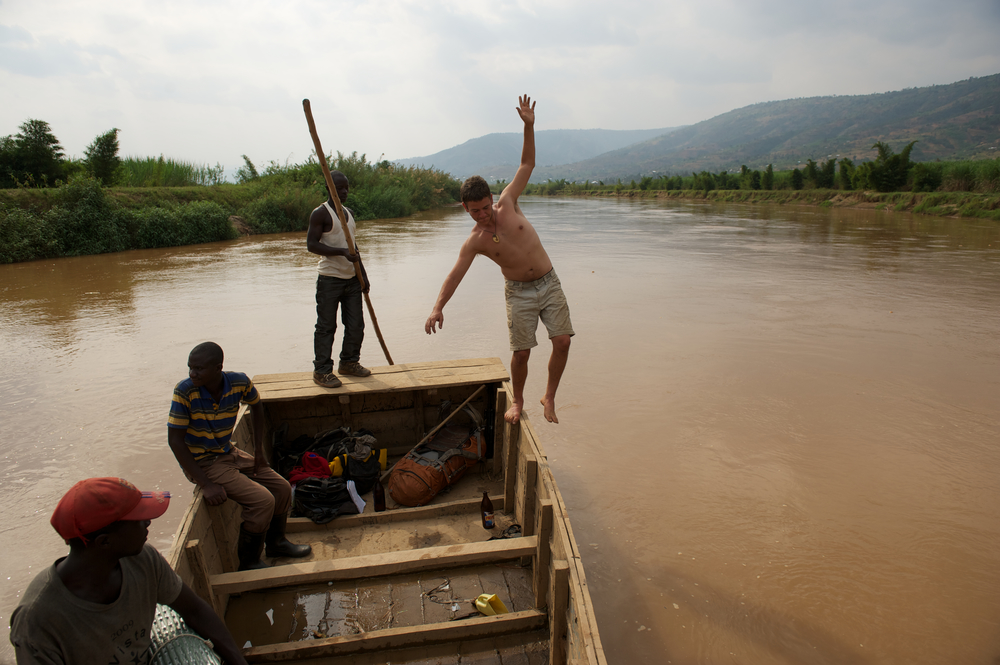Explore River Nyabarongo
Explorer River Nyabarongo: Also called Nyawarungu, the Nyabarongo River is Rwanda‘s principal waterway and a portion of the upper Nile. It is the longest river in Rwanda, spanning roughly 297 kilometers, or 184 miles. It begins its journey in the southwest meeting point of the Mbirurume and Mwogo Rivers. The two rivers originate in Nyungwe Forest, and Nyabarongo forms the border between the western and southern provinces as it runs north for at least 85 kilometers (53 miles).

The Nyabarongo River changes its course at the confluence with the Mukungwa River, running east for roughly 12 kilometers, or 7.5 miles, and springing for roughly 200 kilometers to the southeast. Along its longest length, this river forms a border between the capital city of Kigali and the southern region, as well as between Kigali and the eastern region.
The united river traverses a wide, marshy valley before turning southeast. It drains Lake Rweru at the Burundian border. The river then travels approximately eastward along the Rwanda-Burundi and Rwanda-Tanzania borders until it meets the Ruvubu River. After there, it is known as the Kagera River, Lake Victoria’s principal outflow that empties into the Nile. The river drains the majority of Rwanda‘s central plateau and the area east of the highlands.
Immediately after joining the Akanyaru, the combined river flows east and then south through a series of lakes and marshes in a level valley that runs south-southeast and is about 35 kilometers wide. It floods this area to form a permanent lake and swamp area. The largest Rwandan lake in the complex is Lake Mugesera, which is located on the east bank of the river. Along the river’s left bank are Lakes Birara and Sake as well. From north to south, the lakes on the right bank are Kilimbi, Rumira, Gaharwa, Kidogo, Maravi, and Gashanga. Lake Rweru, which is primarily in Burundi, empties into the river through a brief swampy area to the northeast.
The Nyabarongo River originally originates in southwest Rwanda, which includes Lake Kivu’s eastern shore. Its sources are located east of the Albertine Rift and in the mountain range that encircles Rwanda’s western third. The Rivers Mbirurume and Mwogo are Rwanda’s principal headwaters, rising between 2600 and 2750 meters. Rukarara, one of its longest streams, rises in the Nyungwe Forest and feeds the Mwogo. After flowing south and then east, the Rukarara River empties into the Mwogo River, which flows north and joins the Mbirurume River south of Bwakira. One candidate for the full source of the powerful Nile, which is the furthest headwater, is the Rukarara source.
Because of the elevation, the climate is quite temperate despite being near the equator. March through May and again from September through December are the wet seasons. The woodland is only seldom flooded in the upper parts of the marshes. Numerous water bird species, including the Grey Crowned Crane, Carruther’s Cisticola, Papyrus Yellow Warbler, Sharpe’s Pied Babbler, White Winged Scrub Warbler, Northern Brown Throated Papyrus Gonolek, White Collared Olive Back, Papyrus Canary, Malagasy Pond Heron, other water turtles, Monitors, Sitatunga, Snakes, Crocodiles, Otters, and others, can be found in the River Nyabarongo. Other common plants include Ficus Verruculosa, Myrica Kandtiana, Cyperus Papyrus, and Phoieenix Reclinata. The total area of this river is approximately 142.62 square kilometers.
Activities at the Nyabarongo River
Bird viewing in Nyabarongo Wetlands: A massive wetland is formed by the Nyabarongo River, which supplies water to a dozen lakes and a large number of swamps. The wetland is considered one of Rwanda‘s seven major bird-watching areas. During a safari here, you will have the chance to see more than 40–50 different species of amazing aquatic birds, including swamp dwellers like the Malagasy pond heron, water turtles, monitors, Sitatunga, carruther’s cisticola, Sharpe’s pied babbler, white-winged scrub warbler, white collared olive back, and the Malagasy pond heron in this river, as well as other water turtles, monitors, otters, crocodiles, and more.
Experience the Wetlands: The Nyabarongo River Wetlands are home to a variety of flora and fauna and cover a sizable area. You will also have the opportunity to take a leisurely stroll along the riverbanks, observe the wildlife, and take in the tranquil surroundings while watching for reptiles, waterfowl, and other wetland species.

Investigate River Nyabarongo Photography and Nature Observation; the wetlands offer fantastic chances for both hobbies. In addition to learning more about the fragile environmental balance in this wetland habitat, you will have the chance to photograph the stunning scenery, the water’s reflections, and the distinctive bird species while you explore the marsh’s splendor.
Visit Lake Rumira: The development of a posh resort on the lake and the recent construction of a surfaced access road have improved accessibility for visitors. Here, you may unwind by the lake, take in the beautiful surroundings, and maybe even see some wildlife.
You must travel with a certified local guide who is extremely familiar with the local bird species if you want to have an amazing adventure safari in Nyabarongo River. Because you will be trekking through wetland areas, you should bring a camera, binoculars, long pants and shirts to protect yourself from any vegetation, sturdy waterproof hiking boots, extra drinking water to stay hydrated, and lastly Among other things, heed the advice of your local guide and show consideration for the environment.



